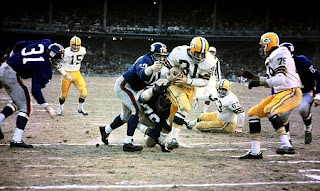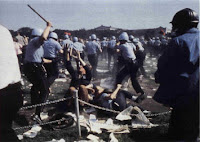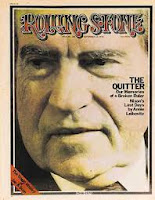This is the interview that ran in Shots magazine. I posted a link to that on 29 October, if you'd like to scroll back to IT for that day you can read my introduction to it. I also reviewed the book back in March, and you can link to that review
here. Otherwise, here's my first version of the Shots interview (there were a few small changes in the web version....
Ragnar Jonasson's
most recent novel, The Darkness, was so impressive that I worked on
arranging an interview from the moment I knew I was visiting Iceland.
We met at his office, in a handsome but unimposing house just off the
centre of Reykjavik. Inside, it's been converted into a slick modern
headquarters for an international investment firm, for whom Jonasson
is a lawyer in his day job. This was a pleasant Icelandic summer day
in August, some sunshine, temperature in the high teens celsius. It
had been a bit colder wetter and more rainy that morning, when my son
and I went out of Reykjavik harbour on a whale watch, to which the
whales themselves were not as accommodating as the crime writer.
Of course in
Iceland when you have a day job, the days are very long in summer and
very short in winter. Which is why my first question was how he
managed to balance his high-powered day job with his steady output of
novels. The interview has been edited slightly to avoid spoilers,
given that the finish of The Darkness is so powerful.
RJ: I write every
night in the winter, which gives me enough time to finish a novel.
It's like a hobby, like some people go hiking, or watch TV. I plan
one book a year, and in Iceland the big publishing date falls before
Christmas, because books are a traditional Christmas present here.
Sometimes I'm tempted to do more, but I really like being a lawyer,
and if I did have more time free, much of it would likely be spent
marketing my books, not necessarily writing more.
MC: You started
writing professionally at a very young age, translating Agatha
Christie. How did that come about?
RJ: I needed a job
for the summer! Christie had been well-translated into Iceland, but I
discovered there were quite a few works still out there, and I liked
them. I starting translating short stories for magazines, and did it
for 10-15 years, again like a hobby. Then the crime-writers who came
before me started to make Icelandic crime a lively genre and proved
it could be done. So Icelandic readers learned to like crime fiction,
but it needed to be a believable story when you're set in a small
country where there aren't as many crimes.
MC: Indridason, for
example?
RJ: Yes, of course,
and it was very interesting how he began by using a situation which
depends on Iceland's being an unusual country.
MC: What drew you to
Christie specifically? Because your 'Dark Iceland' series is very
much in the Christie tradition.
RJ: I love the
classic set-up, a limited number of suspects, but you have to do
something with it—it would look awkward if you copied the settings
and characters.
MC: But there are
similarities in the societies, from what I've seen.
RJ: Iceland is a
very closed and stratified society, which is more obvious in small
communities, which is part of why I set the series in the north. It's
about a close community, nature and the landscape, and the weather.
I'm blessed with having this strange country to work with.
MC: Having just looked at
the old law site at Pingvellur, I wonder if it's a judgemental
society too?
RJ: Certainly in the
old days. I'm not so sure it's still like that, because people do try
to stick together.
MC: You see some
tension in your characters, the way Ari Thor is relatively simple and
straightforward, somewhat traditional, where his girlfriend Kristin
is more modern in many ways.
RJ: Ari is a bit
shy, with a sort of closed-off life and personality, like many
Icelanders are,
so his personal life
can have problems. But the crimes he investigates are the kinds where
that personality allows him some leeway in getting to the solutions.
The Darkness features a new detective for Jonasson, Hulda
Hermansdottir. She is a dedicated, hard-working, old-fashioned kind
of cop, who has been passed over for promotions partly because she is
a woman and partly because that doggedness doesn't always fit in,
when she won't play the office political game. Now she is being
pressed into unwanted early retirement, and to get her out of the
way, she's offered one last cold case to choose to investigate. It
involves the death of a young Russian woman, found on the coast, and
ruled suicide. But that doesn't sound right to Hulda...
MC: I heard you interviewed on BBC Radio 4's Front Row (full
disclosure: a programme to which I am an occasional contributor) a
few months ago after The Darkness was published in hardback, and
although it was an interesting discussion of reading and publishing
in Iceland, I was shocked because they never once asked you about
your novel!
RJ: Well, I was very happy to talk about my country, and we are a
very literate society. But yes, to talk about my book would have been
nice.
MC: I thought The
Darkness was one of the very best novels crime novels I read this
year, and what I particularly liked was the way it ends. I had the
same sort of 'you can't do THAT!” reaction I had when I read Joe
Gores' Interface: you've played with the genre's conventions
brilliantly.
RJ: Thank you! That
was both deliberate but also how the story itself grew. I had an idea
I could work backwards, because I knew from the start it was the only
way I could end the book. I know the ending may come as a surprise,
in fact I expected it, but it was really the only logical way it
could end. It was so powerful. The reaction in Iceland wasn't so
risky, because you can do more because the crime-writing tradition
has been going only a short time. But outside Iceland it was more of
a challenge to break the rules, so to speak, but it was a challenge I
had to take.
MC: Especially
because your earlier books are so relatively traditional?
RJ: You really do
want to challenge the form. You know the rules, and you want to break
them in your own way. That was always my intention.
MC: And it is
somewhat judgemental.
RJ: Yes, there is a
price to pay in the end. You cannot go back. Back in the early
centuries of this state there was no police. Which sometimes means
individuals feel they have no choice but to act.
MC: You establish a
great deal of sympathy for Hulda.
RJ: Which made many
readers almost angry at the way the story progressed. They liked her,
and I loved that reaction. But I'm working on two more novels
featuring Hulda, which go back into her early career.
MC: How do you work
The Darkness into that?
RJ: They won't give
away the twists of The Darkness, but I think to those who've
read the first book, it will provide added value to understand that.
A deeper meaning, if you will. And I've started the next Dark Iceland
novel. I already knew the plot for that one.
MC: It will keep you
busy.
RJ: I wouldn't feel
comfortable any other way!
Ragnar needed to get back to work, as calls were literally lining
up while we spoke in the conference room, but before he did I told
him I particularly loved the very last scene of The Darkness, a coda
of sorts which is seeped in a kind of polite authoritarian hypocrisy,
but also reminds us of how, even in a small, closed society, we may
know very little about each other. He thanked me, and I thanked him
for his time. Two days later, as my plane left Iceland I looked back
at the island and thought just how powerfully and subtly Jonasson had
interpreted his society. And how unexpectedly.
The Darkness,
translated by Victoria Cribb, is out in paperback from Michael
Joseph.
 Unto the
generations, the Swagger family continues to deliver for Stephen
Hunter, who in G-Man revisits Bob Lee's grandfather Charles, who as
the book opens is sheriff of Polk County, Arkansas and there at the
mowing down of Bonnie and Clyde in Arcadia, Louisiana.
Unto the
generations, the Swagger family continues to deliver for Stephen
Hunter, who in G-Man revisits Bob Lee's grandfather Charles, who as
the book opens is sheriff of Polk County, Arkansas and there at the
mowing down of Bonnie and Clyde in Arcadia, Louisiana.





































